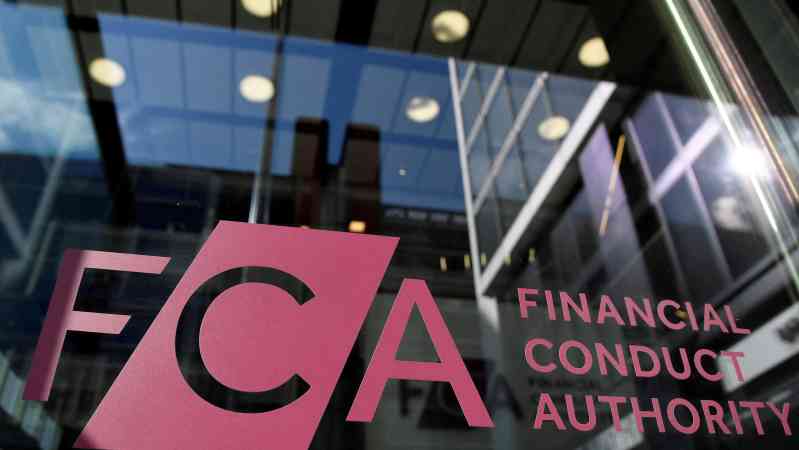Melrose struggling to pull out of deep dive
Melrose, the buyout group turned aerospace giant, has long impressed shareholders with stellar stock market returns. But last week, the FTSE 100 company’s shares dropped by as much as 7 per cent, after analysts at the investment bank UBS suggested its jet-engine business could actually be worth about half of what its management says.
It is understood that Melrose disputes the UBS methodology and believes there are inaccuracies in the report. Still, the downgrade has shaken the stock, taking its year-to-date decline to 14 per cent.
How does Melrose make money?
Melrose started out as a turnaround group, adopting a “buy, improve, sell” approach. It bought manufacturers, revamped them, and then sold them on for a profit. In the decade after its first acquisition in 2005, Melrose delivered a total shareholder return — which combines share price returns with dividends paid — of 437 per cent, compared with 101 cent from the FTSE 100, according to FactSet.
In 2018 it mounted a hostile takeover of the British engineering group GKN, which marked the beginning of its evolution into an aerospace business. It cut 1,000 jobs, made further redundancies during the pandemic and split off its car business into a new listed firm called Dowlais.
It is now a pure aerospace manufacturer, as well as “revenue and risk-sharing partner” (RRSP) on a portfolio of engines, including Pratt & Whitney’s GTF, Rolls-Royce’s Trent XWB84k and General Electrci’s GEnx. Through these programmes, Melrose helps build the engines and is then entitled to a share of the “aftermarket” profits — or, in other words, the money made from the ongoing support services that the engines require.
The company, which is headquartered in London, has two major divisions: engines, including the RRSP portfolio, and structures, which produces non-engine aerostructure components.
Why have Melrose shares fallen so much?
Analysts at UBS downgraded their view on the stock from a “buy” to a “sell” last week. Their argument rests primarily on a lower estimate for Melrose’s RRSP portfolio — UBS believes it is worth £2.8 billion, compared with Melrose’s estimate of £5.7 billion.
The UBS estimate is lower because their model uses different discount rate assumptions (the formula used to calculate the present value of future cash), cash flow estimates, tax, and timing effects.
This is crucial to shareholders because the long-term value of RRSP contracts is what supports Melrose’s claim that it is sitting on a £22 billion “cash mountain”, which UBS argues underpins most of its market value.
What are the concerns around Melrose’s RRSP?
Melrose’s business model relies on years of aftermarket revenues that can be much higher than the original price. Manufacturers typically make little or no margin on the first sale, so long-term service agreements are crucial to profits.
Melrose admits the forecast revenues and costs in these RRSP contracts are “inherently imprecise”, as it must rely on significant estimates to assess future maintenance activity and costs, though this process is audited in its financial statements.
But UBS has argued that Melrose is overestimating the length and value of these contracts as the parts they supply need less maintenance than some of its aerospace peers. Analysts at the bank built their own cash flow model using probable engine repair and replacement rates, which arrived at a cash flow assumption that is £670 million lower than Melrose’s.
The UBS forecast for net cash flows from RRSP contracts was higher than the one provided by GKN in 2018, but still well below management guidance. It suggests that Melrose has taken an optimistic view of its engine lives, despite the fact that since it bought GKN the “RRSP shares on engines have not changed materially”.
UBS also uses a discount rate of 9 per cent, which it says is more in line with the industry average compared with Melrose’s rate of 7.5 per cent. The analysts also took away tax from their estimated value of the RRSP, and included a terminal value for next-generation engine programmes.
How is this connected to Melrose executives’ pay?
Melrose has paid its executives handsomely in the past. Before the end of May this year, management was incentivised by the Melrose employee share plan (MESP), a four-year scheme under which the top 20 bosses collectively received about £300 million. This was based primarily on meeting criteria around share price performance and profit growth.
The new performance share plan (PSP) is still skewed towards profit and share price performance metrics, but UBS has highlighted that it now includes cash flow metrics, too. This is significant as UBS believes that Melrose’s cash flow estimates are flawed.
It is understood that Melrose considers its performance plan to be in line with other FTSE 100 companies.
What does it mean for Melrose shareholders?
The UBS note is likely to hang over the shares, but this is certainly not the first time that accounting around long-term service agreements has come under the spotlight in the aerospace sector. Rolls-Royce has previously faced sell-side attacks around this issue — clarification around accounting in this area helped re-rate the shares.
UBS has pinned its target price for the stock at 400p, which is 16 per cent below the level it was trading at on Wednesday. But most of the City analysts who cover Melrose still rank it as a “buy” or “overweight”. Their average target price for the shares is at 635p, according to forecasts compiled by FactSet, around a third higher than Wednesday’s level.
Looking at the company’s operations, there is certainly reason to be upbeat. Recent half-year results beat profit expectations, with a 62 per cent rise in operating profit to £247 million, and 4.2 percentage point in its operating profit margin to 14.9 per cent. Management also announced a further £250 million share buyback, on top of its ongoing £500 million buyback programme.
Some analysts flagged concern around Melrose’s balance sheet, with net debt rising from £553 million to £976 million. This takes expected leverage for the 2024 full year to a multiple of 1.9, according to forecasts by the broker Peel Hunt, towards the top end of the company’s target range. However, this is expected to fall back to 1.8 in 2025, and 1.3 in 2026.
A spokesman for Melrose said: “We stick 100 per cent with what we’ve reported to the financial community. We have been consistent about the quantum and development in terms of timing for the last three years and fully transparent as to the calculation methodology, with our assessment based on industry recognised forecasts.”
Advice Hold
Why Concerns around RRSP value hangs over shares






